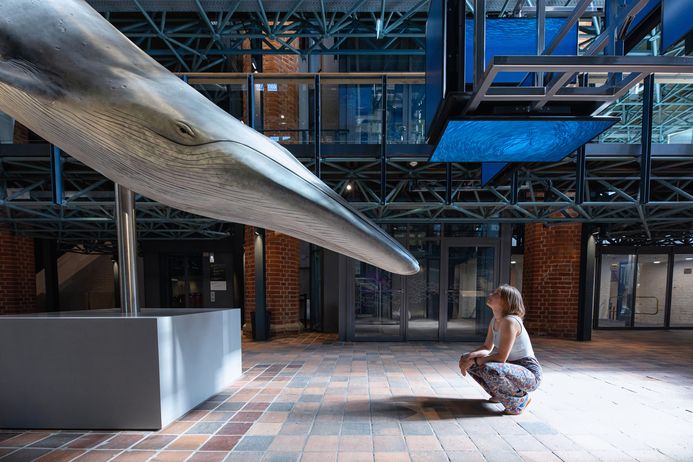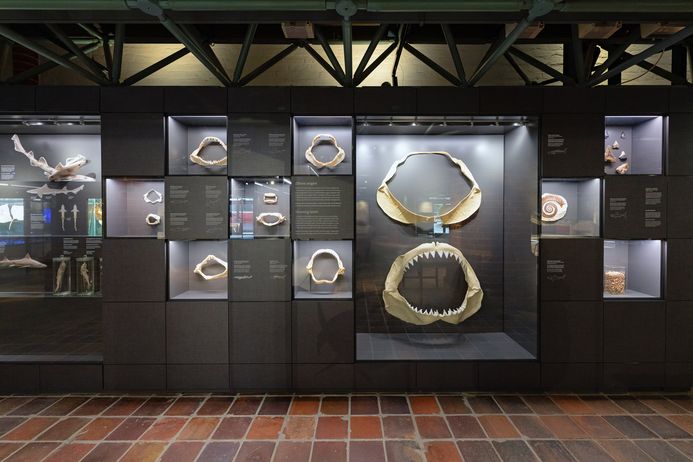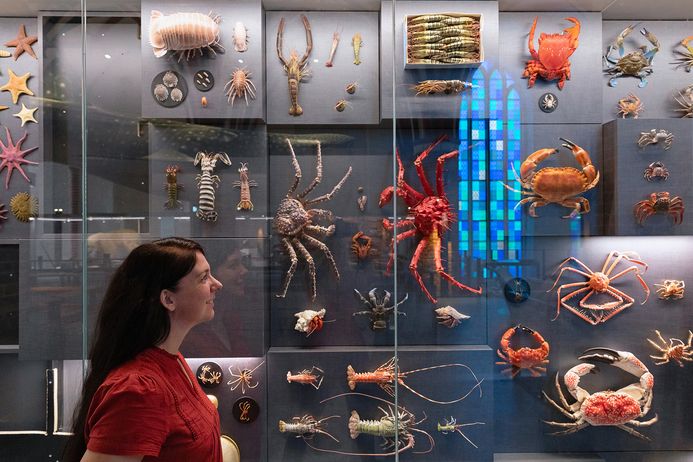MEERESMUSEUM: From origin to diversity in the sea
A medially staged shoal of sardines surrounded by original-sized hunters such as Bryde's whales, bronze sharks, dolphins and Cape gannets illustrates the “wild” life in the sea. This entrance installation, which extends over three floors, also provides a view of the dimensions of the former church hall up to the vaulted ceiling. A model of the historic monastery complex and finds from archaeological investigations provide an insight into the history of the building and shed light on the unique character of the MEERESMUSEUM in the former Dominican monastery.
Evolution
The first exhibition at the MEERESMUSEUM, entitled „Evolution”, shows the emergence of life from the sea. A digital journey through the geological eras is followed by family trees of various animal groups. In addition to original specimens and fossils, exhibits of certain fish, in particular sharks and rays, illustrate the development over the ages. The model of the leatherback turtle „Marlene” invites visitors to learn interesting facts about marine reptiles, their anatomy and way of life. Insights into the past are provided by a hands-on station that examines the anatomy of a fish dinosaur, the Ichthyosaurus, similar to an X-ray. In the choir of the Katharinenhalle, visitors encounter the well-known fin whale skeleton, which is accompanied by skeletons of other marine mammals such as polar bears, manatees, sea otters and seals. The first exhibition concludes with an original-sized megalodon jaw. Measuring around two meters in diameter, the jaw of the extinct basking shark is an inviting photo point to capture the museum visit in a picture.
Humans and ocean
The sea is beautiful, inspiring and mysterious. It is navigated, used and unfortunately also polluted. Exhibits present the interactions between man and the sea in light-looking display cases. A model of the „Towarisch”, now known again as the „Gorch Fock I”, alongside models of other ships and deep-sea submersibles, illustrates how we use the sea. Unfortunately, this use often goes hand in hand with pollution. A modern interactive map presents solutions and protective measures for responsible use of the sea. The various large models can also be seen from here through new openings up to 14 meters long in the floor levels: a great white shark floats between the floors and a glance upwards reveals the huge belly of a full-size whale shark.
Diversity
Numerous specimens in the display cases show just how diverse and species-rich the habitats from the Antarctic to the Arctic are. Starting with the emperor penguins typical of the Antarctic, further specimens illustrate the typical habitats of the sub-Antarctic, open ocean, kelp forest, Sargasso Sea, northern latitudes and the Arctic. The well-known Helgoland bird cliff with detailed specimens can also be seen in the new display cases.
Fisheries
How does the fish get to the plate? Starting with a replica fish counter, guests learn interesting facts about passive and active fishing. What methods are used to catch fish and how can sustainable fishing be achieved? Some particularly impressive net models from the MEERESMUSEUM's old exhibition illustrating fishing methods have been reintegrated into the new exhibition.











